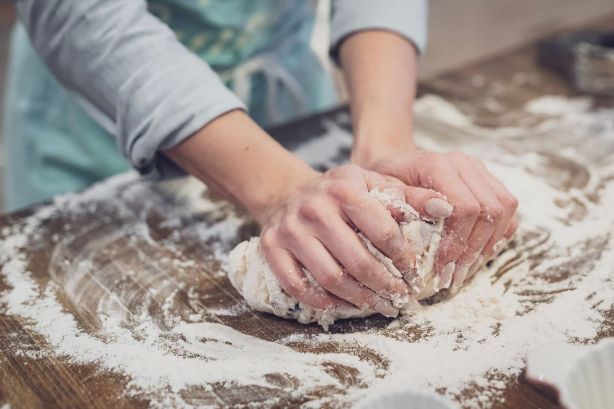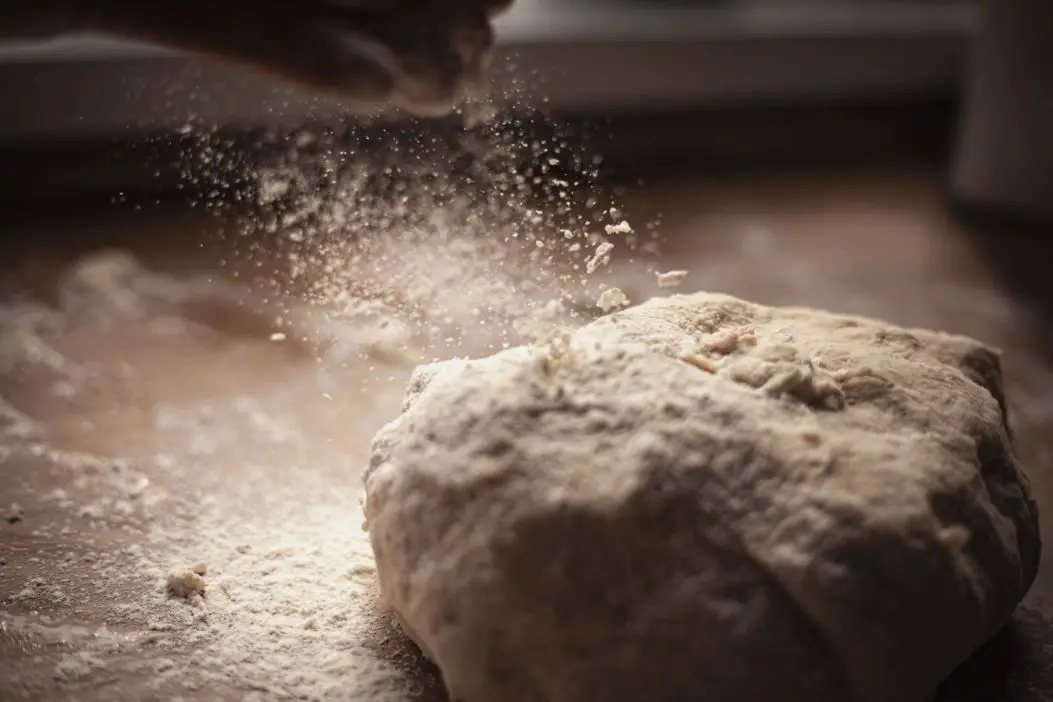Are you struggling with bread dough that has too much flour? This problem can be easily fixed with a few simple steps.
In this article, I’ll reveal how to fix bread dough with too much flour, including assessing the situation, adding moisture, kneading and mixing, resting and rising, and finally baking the bread.
In addition, I’ll provide some tips on how to prevent adding too much flour to bread dough, such as measuring accurately, adding flour gradually, and paying attention to the dough.
By following these tips and steps, you can ensure that your bread comes out perfectly every time.
How to Fix Bread Dough With Too Much Flour – Revealed
If you find yourself with bread dough that has too much flour, don’t worry – Here are 5 steps you can take to fix it.
1. Assess the Situation
The first step in fixing bread dough with too much flour is to assess the situation. How much excess flour is in the dough? You can usually tell by the texture of the dough – if it feels dry, crumbly, or stiff, there’s a good chance you’ve used too much flour.
Another important factor to consider is the type of flour being used. Different types of flour have different densities, which can affect the amount of flour needed in a recipe.
For instance, all-purpose flour has a lower density than bread flour, meaning that you will need to use more bread flour to achieve the same weight.
2. Add Moisture
Once you’ve assessed the situation, it’s time to add moisture to the dough. Moisture will help to bind the ingredients together and create a more cohesive dough.
There are several options for adding moisture – you can use water, milk, or eggs. Water is the most basic option, but if you want to add some flavor and richness to the dough, consider using milk or eggs.
Start by adding a small amount of liquid at a time – a tablespoon or two – and mix it into the dough thoroughly.
Keep adding liquid until the dough starts to come together and feel less dry or stiff. Be careful not to add too much liquid, or the dough will become too wet and difficult to work with.
3. Kneading and Mixing
Once you’ve added moisture to the dough, it’s time to knead and mix it thoroughly.
This step is essential to properly incorporate any excess flour and distribute the moisture evenly throughout the dough.
Kneading can be done by hand or with a stand mixer, and the goal is to make the dough smooth, elastic, and pliable.

This process can take several minutes, so it requires patience. The purpose of kneading is to develop the gluten in the dough. Gluten is the protein in the flour that gives bread its structure and chewy texture.
Proper kneading ensures that the dough will rise correctly and that the bread will have the desired texture and crumb.
4. Resting and Rising
During this time, the yeast in the dough will begin to ferment, releasing carbon dioxide gas that will cause the dough to expand and develop its structure and flavor.
To let the dough rest and rise, it should be covered with a clean, damp towel and placed in a warm, draft-free area.
The damp towel helps to prevent the surface of the dough from drying out, while the warmth of the environment helps to activate the yeast.
A temperature of around 75-80°F (24-27°C) is ideal for yeast to thrive.
The length of time required for the dough to rest and rise will depend on various factors, including the recipe and the temperature of the environment.
In general, the dough should be left to rest for at least an hour, or until it has doubled in size. This is known as the bulk fermentation stage.
5. Baking the Bread
Once the dough has rested and risen, it’s time to bake the bread. Preheat the oven to the desired temperature and place the dough in a greased baking pan or on a baking sheet.

Be sure to score the top of the dough with a sharp knife or razor blade to allow it to expand properly during baking.
Bake the bread for the recommended amount of time, or until it is golden brown and sounds hollow when tapped. Allow the bread to cool for a few minutes before slicing and serving.
How to Prevent Adding Too Much Flour to Bread Dough
Adding too much flour to bread dough can result in a dense and dry loaf. Here are 3 tips to help you prevent adding too much flour to bread dough:
1. Measure Accurately
Instead of using volume measurements like cups and tablespoons, I’ll recommend you just use a kitchen scale to weigh your ingredients, including flour.
This is especially important because different types of flour have different densities and weights, so relying on volume measurements can result in inaccurate amounts of flour being added to your recipe.
By using a kitchen scale to weigh your flour and other ingredients, you can ensure that you’re adding the correct amount of each ingredient, resulting in a perfectly balanced recipe.
This will not only improve the consistency of your baked goods but also ensure that they turn out as delicious as possible every time
2. Add Flour Gradually
It’s important to add flour gradually and in small increments when making dough.
By doing so, you can prevent over-flouring, which can cause the dough to become excessively rigid and dense.

Furthermore, adding flour slowly enables you to observe the dough’s consistency and make adjustments as necessary.
If you add all the flour at once, it will be challenging to achieve the right texture. You may end up with a dough that is too dry, requiring additional water, or too wet, requiring additional flour.
In either case, it may be difficult to restore the dough to its desired consistency.
Therefore, when adding flour to the dough, start with small quantities and mix them well. After each addition, observe the consistency of the dough and determine if more flour is necessary.
By taking this incremental approach, you can make sure that the dough has the desired texture and that it will result in the desired outcome.
3. Pay Attention to the Dough
Pay close attention to the texture and consistency of the dough while kneading it. If the dough feels too sticky, you should add small amounts of flour at a time until it reaches the desired consistency.
However, if you find that the dough is still too sticky after adding flour, it is better to avoid adding more flour and instead use a little bit of oil, water, or flour to lightly moisten your hands or work surface.
This will help prevent the dough from sticking to your hands, and it will be easier to work with.
Additionally, keep in mind that different types of flour can have varying absorption rates, which can affect the dough’s consistency.
So, it’s always better to adjust the dough as needed during the kneading process, rather than following the recipe’s measurements exactly.
What Happens if You Add Too Much Flour to Bread Dough
Adding too much flour to bread dough can actually cause a few problems that can negatively impact the final product.
The most significant issue is that it can make the dough dry and tough, which can make it difficult to work with and shape.
The extra flour can soak up too much moisture, resulting in a dense, inflexible dough that lacks elasticity.
But that’s not all. The excess flour can also mess with the chemical reactions that happen during the baking process, which can result in bread that doesn’t rise properly.
This can lead to a heavy and dense texture, rather than the light and airy texture that we all love in a well-risen loaf.
To make matters worse, adding too much flour can even affect the flavor of the bread.
The flour helps to balance out the other ingredients and can impact the fermentation process, so too much flour can cause the bread to taste bland and starchy, which isn’t very appetizing.
It’s important to note that adding too much flour can also change the hydration level of the dough, which can have an impact on the baking time and temperature.
This can be especially important when following a recipe, as even small changes in the ratio of ingredients can make a big difference in the final result.
How to Fix Bread Dough With Too Much Flour – Conclusion
In conclusion, fixing bread dough with too much flour is possible and can save you from having to throw away your entire batch.
It is important to slowly add in small amounts of liquid and knead the dough until it reaches the desired consistency.
It may take some time and effort, but with patience and persistence, you can salvage your bread dough and still have a delicious end product.
Remember to be mindful of the flour-to-liquid ratio in your recipe in the future to avoid this issue altogether.

